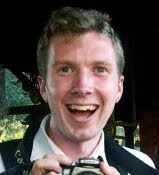


In 1958, three years after the grand opening of his renowned Disneyland, Walt made a trip to Europe for work on his new feature
Third Man on the Mountain. Over the course of the trip, he became inspired to build three new attractions based on Switzerland's Matterhorn, Alweg's monorail, and Jules Verne's
20,000 Leagues Under the Sea, which the Disney studios had adapted into a live action film a few years prior. Returning from the trip, Walt excitedly told his brother Roy of these new adventures he wanted to build in Disneyland, but was promptly shut down. As successful as the new park had been, the Disney Co. still had quite a bit of debt to pay off, and Roy refused to consider any new expensive attractions until they were debt free.
However, Walt's tenacity wouldn't let him take "no" for an answer. Some time later, Roy went to Europe for discussions with potential investors and Walt called a meeting together with his Imagineers to make an announcement. "We're going to build the Matterhorn, the Monorail, and the Submarines," he told them enthusiastically. The announcement caught the Imagineers off-guard. They all knew Roy would never agree to finance Walt's ideas as long as the company was still in the red. "What will Roy say?" they asked. "We're just going to build 'em," Walt replied. "Roy can figure out how to pay for 'em when he gets back."
And so per Walt's orders, work began and three new classic Disneyland attractions were born, each one unique in its own right. No one had ever tried to build a roller coaster inside an artificial mountain before, and to top that, Walt's Matterhorn "bobsleds" were the first coaster vehicles to run on tubular steel track, which revolutionized the roller coaster industry. And of course, nothing like the Submarine Voyage had ever been attempted before. For the first time, guests were taken underwater as they sailed pasted coral reefs, sunken ships, and even the lost ruins of Atlantis, all without leaving the borders of Tomorrowland. Finally, the Disneyland Monorail was the first of its kind on the western hemisphere. Walt hoped that the introduction of the monorail to his park would lead to a new widespread method of transportation that would relieve the traffic congestion of metropolitan areas.

On June 14th, 1959, a huge gala celebration was held to commemorate these spectacular new attractions, and Walt considered the event the "second opening of Disneyland". Vice president Richard Nixon and family were on hand for the ribbon cutting of the Disneyland Monorail while Walt's submarines were christened the eighth largest submarine fleet in the world. Across the way, alpine climbers scaled the Matterhorn to its peak while Swiss dancers performed below. The entire celebration was televised by the American Broadcasting Company, allowing viewers from around the country to enjoy the excitement that surrounded the festivities.

In addition to these three new adventures, June 14th also marked the introduction of the E-ticket. When Disneyland first opened, all the attractions required a specific ticket for admission. Smaller rides took an "A" ticket, while bigger adventures such as the Jungle Cruise required a "D" ticket, with "B" and "C" tickets in between. When the Matterhorn, monorail, and submarines debuted, they were deemed worthy of a new ticket, the "E" ticket. The term became renowned both inside and outside of Disneyland and is used to this day to describe the biggest and the best that Disneyland has to offer, even though the admission tickets were discontinued in the 1980's.
The Matterhorn and the Disneyland Monorail have both continued to serve happy guests ever since that exciting summer of 1959. The Submarine Voyage also continuously operated until 1998, at which point the subs "submerged" into Disney history until resurfacing in 2007 as the Finding Nemo Submarine Voyage. And, as always, Disneyland fans continue to describe Disney's best experiences as classic "E" ticket adventures! There is no doubt about it - June 14th is certainly a day to remember in Disneyland history!
T.H. Excellence
All photographs copyright the Walt Disney Company.
 One of my favorite positions as a guest control cast member is patrolling the bridge that marks the entrance to Frontierland. Foot traffic is pretty light until the fireworks let out, so I spend most of the evening answering guest questions and enjoying the sights and sounds of the park as the sun sets for the day. The other night, a woman came up to me and asked if it was all right for her young son to feed the ducks. "Perfectly fine," I replied, and the family spent the next five minutes on the bridge as popcorn and pieces of bread were tossed into the water. The ducks swam all around, trying to eat everything before it sank, and soon a small crowd of five or six people had gathered to watch the antics below them.
One of my favorite positions as a guest control cast member is patrolling the bridge that marks the entrance to Frontierland. Foot traffic is pretty light until the fireworks let out, so I spend most of the evening answering guest questions and enjoying the sights and sounds of the park as the sun sets for the day. The other night, a woman came up to me and asked if it was all right for her young son to feed the ducks. "Perfectly fine," I replied, and the family spent the next five minutes on the bridge as popcorn and pieces of bread were tossed into the water. The ducks swam all around, trying to eat everything before it sank, and soon a small crowd of five or six people had gathered to watch the antics below them.






